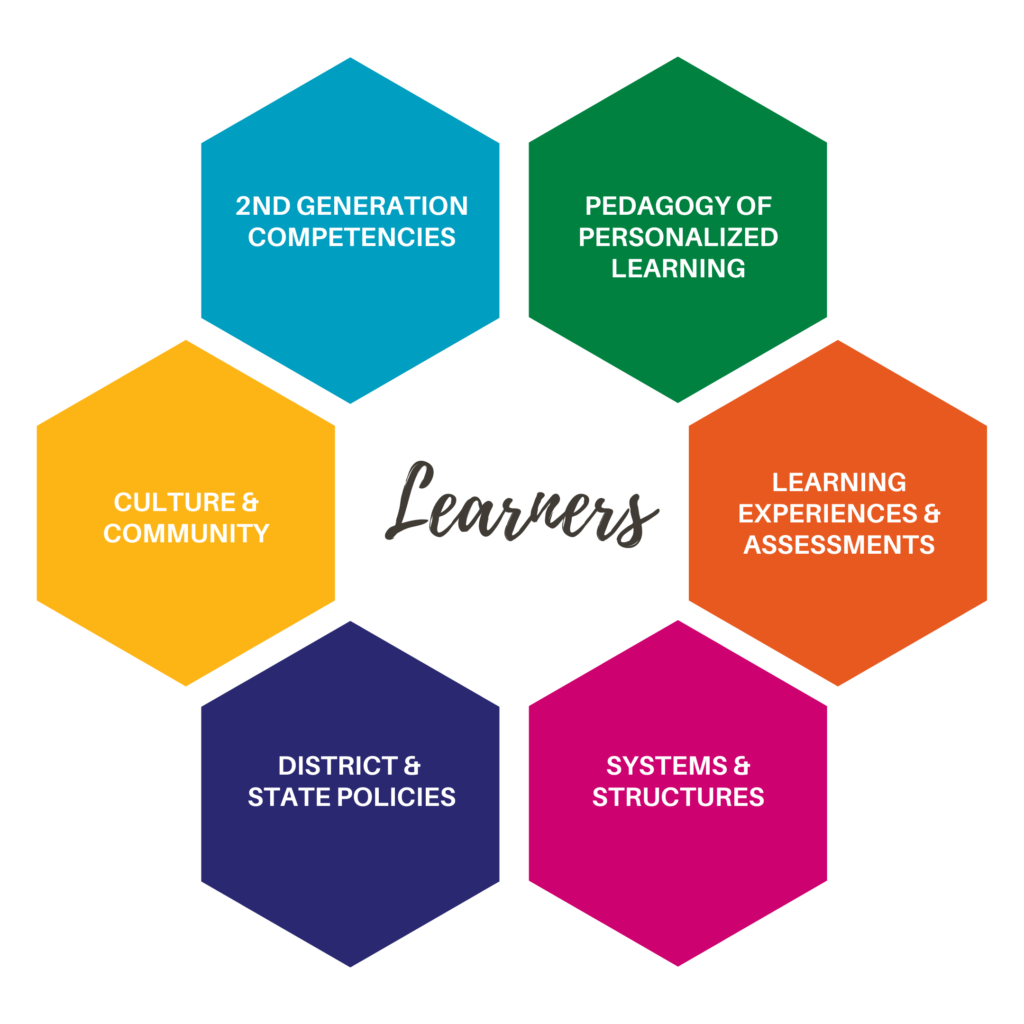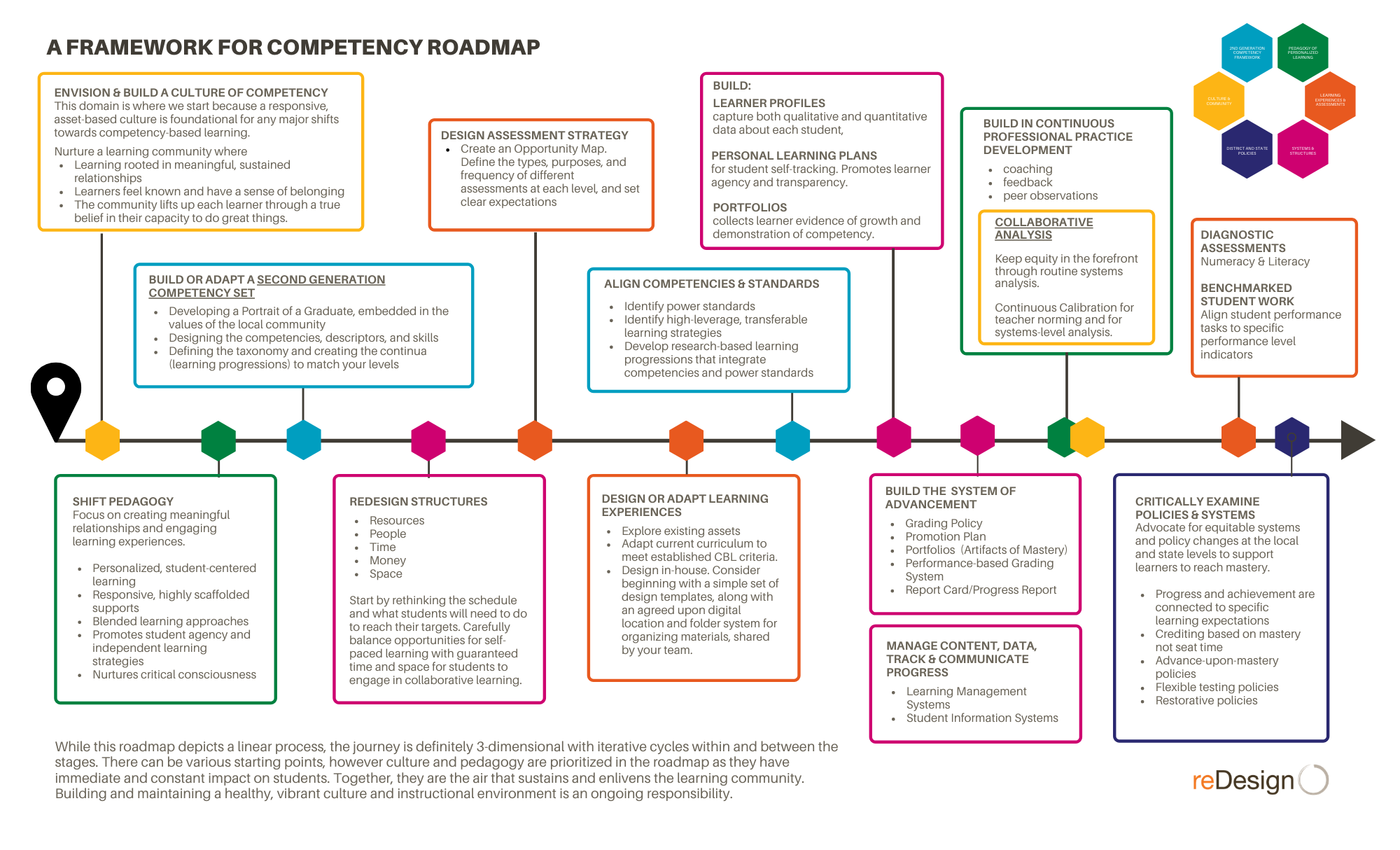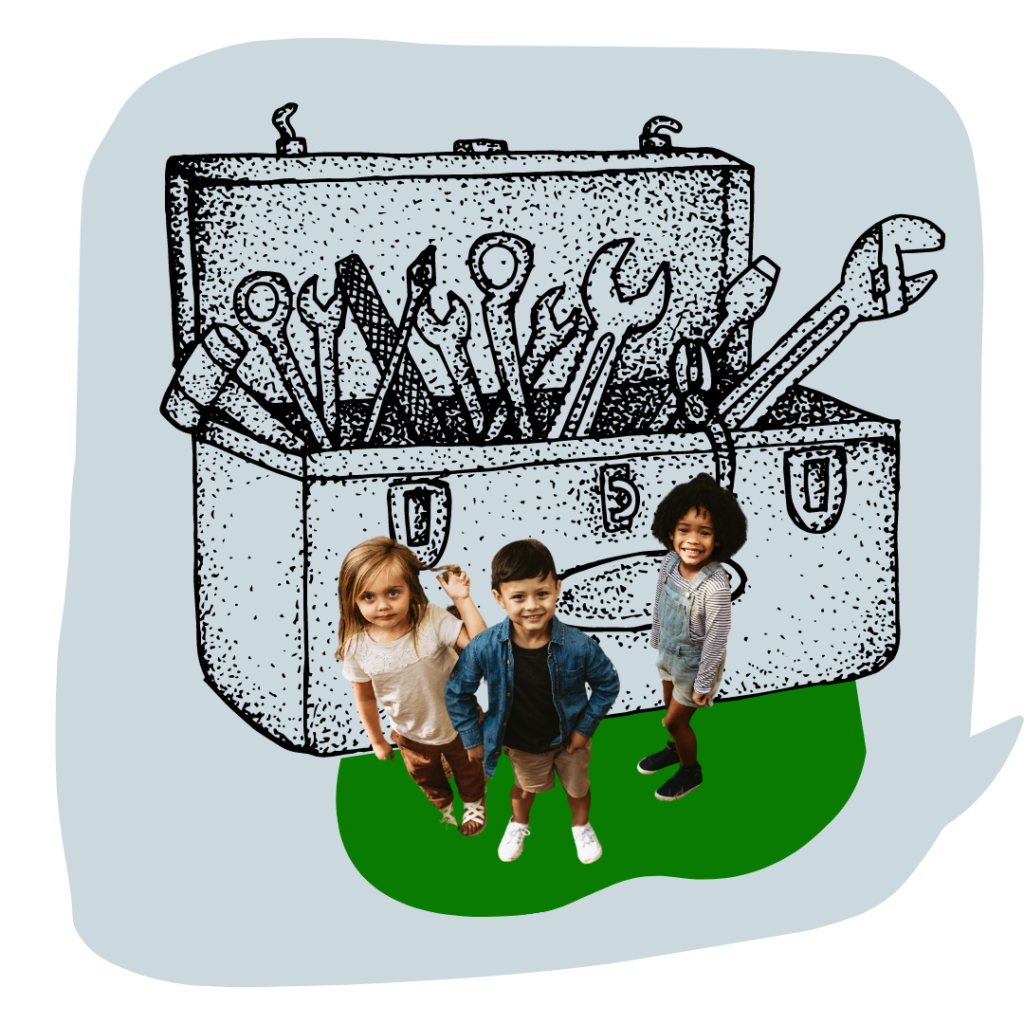A Framework for Competency

At its most basic level, education is about helping learners get really good at “things”. And not just 70% good, but to develop high levels of competency in areas that are meaningful and important to learners, their communities, and their futures.
At reDesign, we know that in order to develop competence, much more than a well-designed competency set is required. It’s really about transformation – on cultural, systems, and personal levels.
reDesign’s Framework for Competency identifies six domains that require attention and deliberate effort in order to make the shifts towards a Learner-Centered Community — one that nurtures, sustains, challenges, and celebrates ALL learners. Our framework offers myriad activities and multiple entry points to help you get started on your journey.
It’s not simple, but our tools can help make the complexity of systems change very actionable.
Note: While ‘competency’ and ‘mastery’ are often used interchangeably in the field, at reDesign we intentionally use the word ‘competency’ rather than ‘mastery’, a term irrevocably intertwined with patriarchy and slavery.
Explore the framework
As you tour the six domains of our framework for competency, you'll notice how connected the activities are to each other and to learner-centered communities.
culture & community
Healthy CBL learning environments value and cultivate caring relationships, self-efficacy, a deep sense of belonging, and meaningful community connections. Learners feel respected, seen and safe, in a community that supports opportunities for them to learn,make mistakes, and recover. Competency-based learning communities are guided by a shared belief that ALL students can learn at high levels and embeds mindsets and practices that ensure an equitable, caring, responsive culture.
Culture is critical to establishing the necessary conditions for the change we seek. As Donella Meadows’ work explores, culture is a powerful leverage point for systems transformation. If our hope is to lead or support a transition to personalized, competency based learning – or any school or system transformation effort- even the best laid plans will fail if we ignore the cultural underpinnings of the status quo. It is critical to remember that our current policies and practices do not exist in a cultural vacuum; rather, they are grounded in a particular set of widely accepted cultural beliefs, attitudes, ideals, and so forth.
key actions
- Create community commitments & norms
- Define equity goals & name equity issues to ensure equity for all adults, students, and families
- Create culturally-grounded celebrations, rituals, and rites of passage
- Collaboratively design community-building activities
- Create equity-grounded practices and norms for small and large group interactions, across all developmental stages
- Develop equity-grounded practices to address behavior that pushes against commitments, norms and practices
2nd generation competencies
Competencies are the backbone of a framework that provides rigorous, common expectations for learning (knowledge, skills, and dispositions) that are explicit, transparent, measurable, and transferable. 2nd Generation competencies are both academic and efficacy-oriented, and are grounded in the philosophy of Positive Youth Development to build student competence, connection, and agency.
key actions
- Develop draft Learner Profile / Profile of a Graduate grounded in community values and beliefs about what students should “get really good at”
- Explore the field and examine examples of competency sets in action
- Adopt an existing competency set OR
- Identify 8-12 key competencies (not standards) and associated skills
- Identify [local] power standards
- Identify high-leverage, transferable learning strategies
- Develop a Grading Policy that will support students in becoming competent
- Develop research-based learning progressions that integrate competencies and power standards
pedagogy of personalized learning
Students receive timely, differentiated supports based on their individual learning needs, supported by a skilled team of practitioners who are diagnosticians, content experts, effective facilitators of learning, caring mentors, and fierce advocates. Students learn actively using different pathways and varied pacing. Students are empowered daily to make important decisions about their learning experiences, how they will create and apply knowledge, and how they will demonstrate their learning.
key actions
- Engage in high quality learning opportunities around CBL pedagogy
- Use the Pedagogical Framework for Competency-Based Learning to identify and prioritize focus areas for training, practice, and leveling up.
- Use collaborative analysis to norm around rigor, social justice orientation, and cultural responsiveness
- Keep learners centered. Develop and employ agile survey tools for regular feedback from students on learning experiences
learning experiences & assessments
Learning experiences are deliberately designed and assessed using competency skill continuums and content standards, providing students equitable opportunities to practice and master target skills. Students develop their agency, engaging as productive, active learners who take purposeful and meaningful action in pursuit of their goals and aspirations. Learning resources and experiences are designed to reflect, honor, and build upon the strengths, interests, culture, values, and identities of each learner. Assessments are FOR learning; they are meaningful, positive, and empowering learning experiences that yield timely, relevant, and actionable evidence.
key actions
- Explore exemplars from the field and hone in on teacher-facing and student-facing templates. These will vary by age group. Include learners in this exploration and gather their insight about what works and what doesn’t.
- Engage in high quality learning opportunities around CBL learning experience design
- Draft a PreK-12 Opportunity Map
- Design: PreK-12, ELA, Math, Science, Social Studies
- Identify high quality digital resources
- Use collaborative analysis to norm around rigor, multiculturalism, social justice orientation, and cultural responsiveness [TOOL: Rigor, Relevance and Agency]
- Keep learners centered. Develop and employ agile survey tools for regular feedback from students on learning experiences
- Integrate units/projects with local Learning Management System
systems & structures
Key differentiators of competency-based learning involve the systems-level approaches to time, grades, advancement, and human capital. CBL systems create opportunities for students to advance upon demonstrated mastery, and as such must establish structures to ensure consistency, reliability, access, and equity and must invest in people with mindset, knowledge, skills, and passions to sustain the vision. Strategies to ensure equity for all students are embedded in the culture, structure, and pedagogy of schools and education systems.
key actions
- Develop a Student & Staff Experience Strategy and a Master Schedule & Facilities Plan: When is learning support/guidance available from adults? Which adults? What kind of schedule? Where/when can learning safely happen in-person? Who will facilitate it?
-
Develop an equity-grounded approach to grouping students for various experiences and activities. When, how often, and with whom?
-
Establish meaningful touchstones when adults and students come together to connect, celebrate, support, mentor, reflect, and play. Build support into the systems
-
Re-envision faculty and staff roles and position descriptions
-
Articulate work conditions and commitments, expectations and supports
-
Determine/select the system to manage content, track data, communicate progress
-
Collaborate with the Competency Design Team on Grading Policies
-
Develop Learner Profiles to capture both qualitative and quantitative data about each student
-
Develop Personal Learning Plans for student self-tracking and to promote learner agency and transparency
-
Develop Portfolio System to collect learner evidence of growth and demonstration of competency
district & state policies
Policies at the local and state level must be pushed to support the growth of young people and to recognize their progress based on evidence of mastery, not seat time. It is critical to develop the capacity of higher ed institutions, local businesses, government representatives, community activists, and congregations, along with teachers, parents, students, to build advocates to pave the way for positive, equitable change.
key actions
STATE POLICIES
- Identify immediate and longer-term barriers to competency-based learning model goals
- Identify examples of innovative models that get around barriers
- Recruit stakeholders from universities, government, businesses, etc to advocate for flexible policies
DISTRICT POLICIES
- Examine District discipline policies and practices to ensure focus on equitable student development and community repair; develop new policies as needed.
How to begin? Where to go next?
These are such great questions! Each community is unique, and even within the same community, people ar at different places in the CBL journey. We have designed a roadmap that lays out key activities for each of the framework domains. We believe it offers a wide variety of entry points so that no matter where you are, you will find meaningful ways to move forward.
Explore our roadmap!

Explore the Resource Bank for all things Competency-Based Learning
Organized around the main components of a CBL system, our Resource Bank offers a practitioner’s glossary of terms, designers’ tips, and curated resources. Explore the best thinking in the field on topics such as Personalized Learning, Flexible Pacing, and Learning Progressions, while also discovering what Data Backpacks are, and how to distinguish them from Learner Profiles.

Under construction.
Coming soon!
Contact info@redesignu.org if you need help accessing a resource immediately
